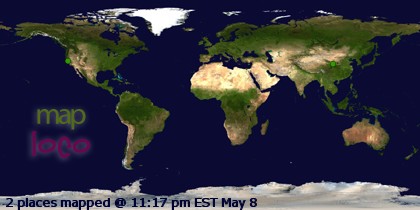While I was working out in the yard today, I noticed something not quite right about my milkweed plant in the front yard next to the turret. Parts of it had a yellowish, orange hue to them. The milkweed is supposed to be green or blueish green, so I thought maybe my color sense was messed up for a moment.
Upon closer inspection, I found it had some kind of infection. Not sure what it was, but it was definitely spreading. I got out the hand clippers from the garage, but milkweed is a very fibrous plant and resisted clean cutting, and the garage clippers are almost as old as my son and well worn, so around to the back of the house to get the rotary assisted Fiskars. As I began pruning, I noticed the yellow orange globs to be moving, and tiny little winged creatures with transparent wings flitting here and there amongst the colorful blobs. This was not a fungus or bacterial infection, this was an army of insects, at various stages of development, eating its way into all the new shoots the milkweed was sending out.
I got a large yard waste sized garbage bag (ForceFlex, is a sturdy bag of choice, for prevention of punctures and tears), lined an old liquor bottle case with it, and started tossing pruned stems in it, as the blobs slowly crawled and the winged variants flitted about. Took almost an hour to clear the plant of the invaders. Below many of the colorful blobs were darkened, sticky, non moving masses much lower on the stems. I didn't know what those were at the time, but I pruned them off as well.
Turns out, it was not just one invasive species attacking my milkweed, but it was a grotesque symbiosis of Oleander Aphid (Aphis nerii) and a parasitic wasp known as Lysiphlebus testaceipes (link here, thanks Texas A&M!). "In most cases, many of the oleander aphids become infested with a parasitic wasp... Infested aphids swell, turn brown and die. The wasp cuts a hole in the back of the aphid’s abdomen to emerge."
Mmmmmm, like Alien face huggers. I am glad the aphids are "medically harmless" since they make orange stains over skin and clothing when touched. And when did "honey dew" become synonymous with "aphid cr*p"? I used to deliver Honey Dew melons when I drove produce delivery trucks. They did not consist of aphid droppings.
After amputating all the infected stems, I finished my yard work, which included "vacuuming" and mulching up all the remaining dead lantana and bougainvillea leaves, post frost, and then dumping the finely ground organic material into the bag with the aphids and wasps to smother them. Yes, I know it is not landfill friendly that way, but we have no grass or "beds" in my yard, as it is a desert scape of crushed rock. There really is no place to recycle and reuse crushed poisonous bougainvillea leaves chez moi. Large yard waste bag triple tied air-tight, and dumpstered. I hope my poor assaulted milkweed recovers soon. The tarantula wasps will be arriving soon and will be very hungry.
Curious about the title translation? link here.
10 years ago



No comments:
Post a Comment
Note: Only a member of this blog may post a comment.